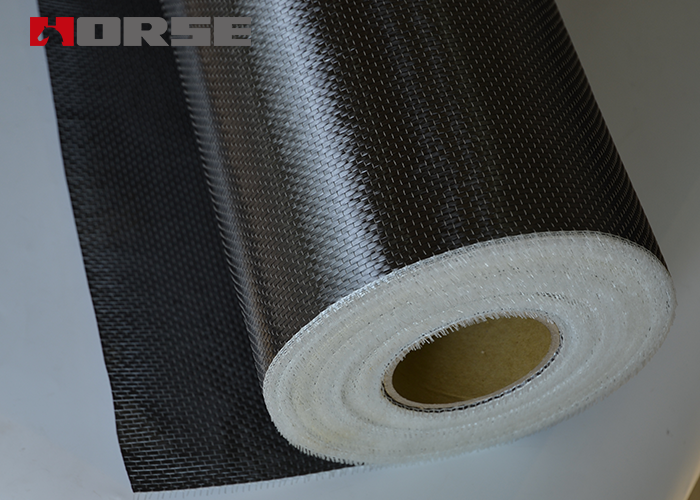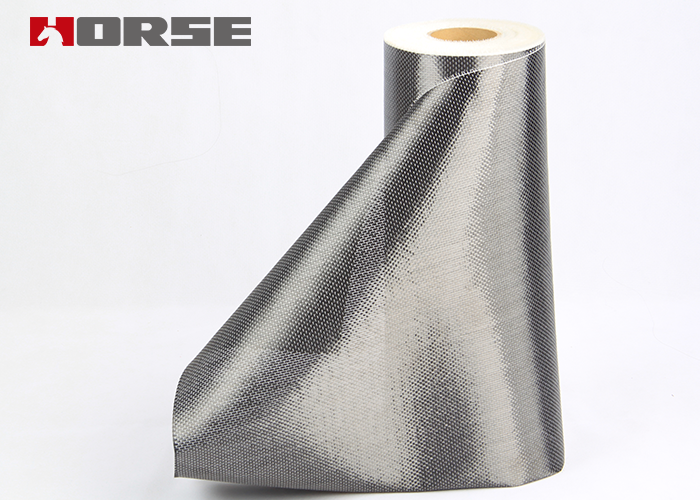Solutions
Horse Construction offers full range of structural strengthening materials with technical supports, documentation supports, products supports, project supports.
Production Method Of Carbon Fiber For Building Reinforcement

1. Selection of carbon fiber raw materials
Carbon fibers are made of organic polymers, which are composed of carbon atoms held together in a long chain of molecules. Most carbon fibers are made of polyacrylonitrile raw materials, and a few are made of rayon or pitch raw materials.
Gases, liquids and other materials used in the production process will also produce specific effects, resulting in carbon fibers of different qualities and grades.
2. Production of carbon fiber
The production and manufacture of carbon fiber involves organic chemistry and mechanical links. The precursor produces continuous silk fibers according to stretching, and then heated at high temperature in an inert atmosphere to make the fiber atoms vibrate violently, and most of the non-carbon atoms are expelled.
After high temperature carbonization, the remaining fibers consist of a long, intimate chain of carbon atoms, with little or no remaining non-carbon atoms. The fibers will be woven into fabrics or combined with other materials, or entangled with filaments. Processed into the desired shape and size.
3. Weaving carbon fiber
Given that carbon fiber is filamentous, in order to be fully functional, carbon fiber must be woven to obtain a carbon fiber woven cloth. Carbon fiber cloth is mainly divided into unidirectional carbon fiber cloth, bidirectional carbon fiber cloth, and other carbon fiber cloth. The following editor will introduce several weaving methods of unidirectional carbon fiber cloth and bidirectional carbon fiber cloth to you.

1). Unidirectional carbon fiber cloth
Unidirectional carbon fiber cloth refers to a carbon fiber cloth with many carbon fiber filaments in the same direction (usually the direction). There is only a small amount of carbon fiber filaments in the opposite direction, generally thin carbon fiber filaments, and as a result virtually all the strength of the cloth is in the same direction.
In fact, unidirectional carbon fiber cloth does not mean that there is only carbon fiber in the same direction. It has carbon fiber in the warp and weft directions, but generally only a small amount of carbon fiber yarn plays a fixed role in the latitude to avoid its dispersion.
Unidirectional carbon fiber cloth retains all the strength of carbon fiber and is especially beneficial as a reinforcement material. Therefore, the combination of unidirectional carbon fiber cloth and resin is widely used in construction and bridge reinforcement materials.
2). Two-way carbon fiber cloth
The bidirectional carbon fiber cloth is made of carbon fiber tow, and it can be woven in two directions according to the latitude.
Plain weave is characterized by regular interweaving of warp and weft yarns, light weight, good wear resistance, air permeability, uniform cloth surface, and the same front and back sides. In view of the fact that the fiber bundle of carbon fiber cloth is always in an undulating state, the fiber has more bending points, and the elongation rate is high during the stretching process.
You can find anything here you are in need of, have a trust trying on these products, you will find the big difference after that.

High strength, unidirectional carbon fiber wrap pre-saturated to form a carbon fiber reinforced polymer (CFRP) wrap used to strengthen structural concrete elements.

High strength, unidirectional carbon fiber fabric pre-saturated to form a carbon fiber reinforced polymer (CFRP) fabric used to strengthen structural concrete elements.

High strength, unidirectional carbon fiber sheet pre-saturated to form a carbon fiber reinforced polymer (CFRP) sheet used to strengthen structural concrete elements.